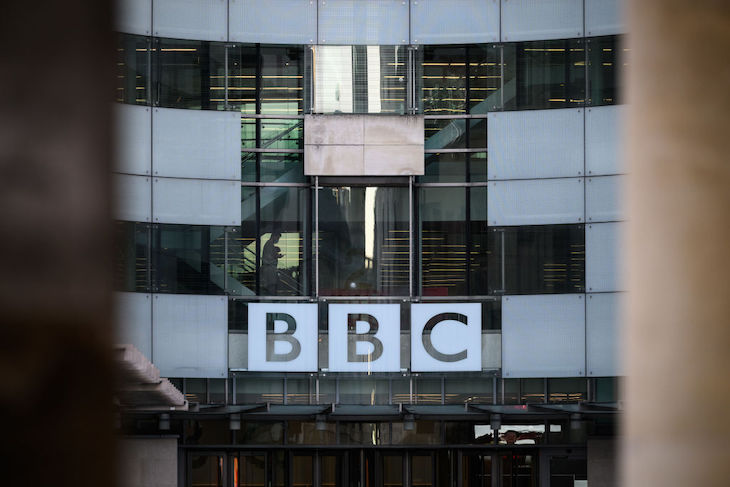Tonight, I’m going to hear Joyce DiDonato, one of the greatest living sopranos, sing Schubert’s song cycle Winterreise. On Saturday afternoon, I’ll be at a masterclass given by Gautier Capuçon, a glorious cellist. And on Sunday night, I’m seeing him play all five of Beethoven’s cello sonatas. I tell you this not (just) to make you jealous, but because all three concerts will be at London’s Wigmore Hall, which this week told Arts Council England (ACE) where it could put its annual grant of £350,000.
ACE really does suggest that the problem with opera is that it is a form of classical music
The Arts Council was the successor to the wartime Committee for Encouragement of Music and the Arts (CEMA), set up to organise artistic and cultural activities for the general population. As CEMA’s chair, John Maynard Keynes, put it, its task was: ‘Not to teach or to censor, but to give courage, confidence and opportunity…(and to provide) a universal opportunity for contact with traditional and contemporary arts in their noblest forms…Your enjoyment will be our first aim.’ That was indeed a noble aim.
But today’s successor body, ACE, is as far removed from Keynes’ vision as Mozart is from a boy band. It is another example of historian Robert Conquest’s second law of politics: ‘Any organisation not explicitly and constitutionally right-wing will sooner or later become left wing.’
ACE’s criteria for grant-giving no longer depends on the quality of what is produced but on DEI (diversity, equity and inclusion). Its 2020 ‘mission statement’, Let’s Create, is a perfect parody of what you would imagine a quango captured by DEI ideology would come up with; except, of course, that it is not a parody, but the basis on which Arts Council England now decides its awards.
Last year, it published Let’s Create: Opera and Music Theatre Analysis. Opera, for ACE, is a deeply problematic art form because, according to the report: ‘What repertoire is prioritised, and how repertoire is interpreted and presented for contemporary audiences, is affected by the prevalence of classical music paradigms in opera and music theatre’.
Yes, ACE really does suggest that the problem with opera is that it is a form of classical music. This is a bad thing, obviously, because ‘the stories which opera and music theatre tells are failing to connect fully with contemporary society’.
It’s the sheer bone-headed stupidity that grates most. Because it’s not just opera and classical music which is viewed by ACE as problematic in terms of modern relevance: there is not a word in any of this that could not be applied, for example, to Shakespeare.
Under ACE’s Let’s Create strategy, social outreach, diversity and the rest of the DEI mantra appear to be far more important than artistic output. Any organisation which receives taxpayer funding must produce quarterly reports (based on a 60-page instruction manual) on their investment principles, finances and ‘activities’ – which mean the likes of community outreach projects, work towards Net Zero and diversity programmes. Putting on a cycle of the Shostakovich string quartets, for example, as is the wont of the Wigmore Hall, probably doesn’t cut it, unless those involved demonstrate their fealty to DEI.
The Wigmore Hall is not only the best concert hall in Britain, but in the world. For a start, its acoustics are perfect. There are no bad seats (my own preference is the front of the small, four row balcony). But more than that, its programming is second to none. When I was young, the hall was known mainly for providing a platform for debuts, along with a small roster of performers nearer the end of their careers. That changed under William Lyne’s 37 years in charge, luring many – most – of the world’s greatest musicians to the 550-seat hall. Its current director, John Gilhooly, has been in charge since 2005. He has made a great hall even greater. The Wigmore Hall is about as good as it can get when it comes to artistic excellence.
But for ACE, that has become almost an irrelevance. As Gilhooly says: ‘You cannot impose the same criteria on a great artist that you impose on a community event. Of course, an amateur choir is excellent, just like amateur football is excellent, but it’s not the same as the Olympics. And what we put on the stage here is the Olympics.’
That, though, is exactly what ACE now does – and why the Wigmore Hall has decided to break free in order to maintain its artistic standards. Running the hall costs £8.5 million a year, of which just under half comes from ticket sales. ACE’s grant makes up 3 per cent of its revenue. The rest comes from donors and sponsors. Gilhooly has bridged the ACE gap through a ‘director’s fund’ launched last year. It has already reached its £10 million target.
The ability and willingness of its regular audience to raise such a sum shows why Wigmore Hall is different from most of those venues and organisations who are stuck with ACE and its diktats. Arts subsidy exists precisely because without taxpayer support many organisations would be unable to function properly and to offer the arts that as society we consider should be supported and made available to everyone. That’s why ACE is now such a perversion not only of Keynes’ original idea but of arts subsidy itself. It no longer subsidises art for art’s sake – and for excellence’s sake. It subsidises bodies on the basis of whether or not they conform to a set of ideological views about the role of art and the function of taxpayer subsidy.
Three cheers to Wigmore Hall for breaking free. But while they have been able to escape, where is the drive to take ACE out of the hands of the commissars and put it back into the hands of those who believe in the arts?







Comments